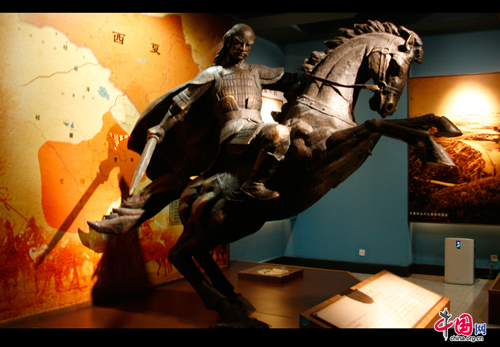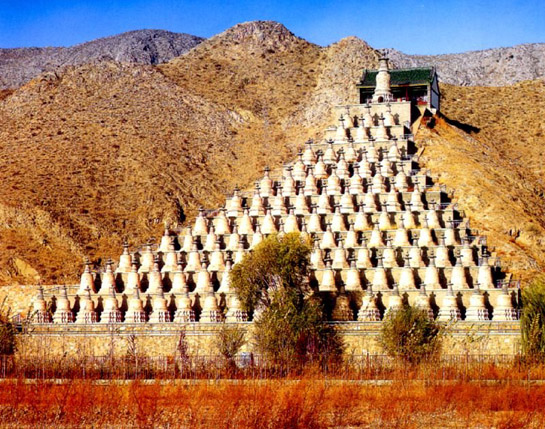| Xixia Culture | |||
|
|||
|
Xixia, literally "Western Xia," is a medieval Chinese empire established by the Tangut chieftain Li Yuanhao in 1038 in today's Yinchuan, capital of Ningxia Hui Autonomous Region, on the western side of the Yellow River, in contrast to the Liao (916–1125) and Jin (1115–1234) on its east, and the Song Dynasty in the south.
Li ordered the creation of a Tangut writing system and the translation of Chinese classics into Tangut, and the unique Xixia Culture began to take shape. During the peak period, the empire spans what are now the northwestern provinces of Ningxia, Gansu, Qinghai, Shaanxi, Xinjiang, and Inner Mongolia, measuring about 800,000 square kilometers.
However, the state suffered from devastating destruction by the Mongols who founded Yuan Dynasty (1271–1368), including most of its written records and architecture. The magic power and its culture perished overnight after being defeated by Mongol troops in 1227, only leaving the Western Xia Mausoleum, Cliff Carvings at Helan Mountain and other few relics in Ningxia, including Chengtian Temple Pagoda, Twin Pagodas of Baisikou, and 108 Pagodas in Qingtongxia due to the Tangut worshipping of the Buddha.
The Western Xia imperial tomb complex, known as Oriental Pyramid, has started a project to bid for world heritage status since 2011. The site is expected to be included in UNESCO's World Heritage List in 2015. |
| Tools: Save | Print | E-mail |
|
| Comment |







